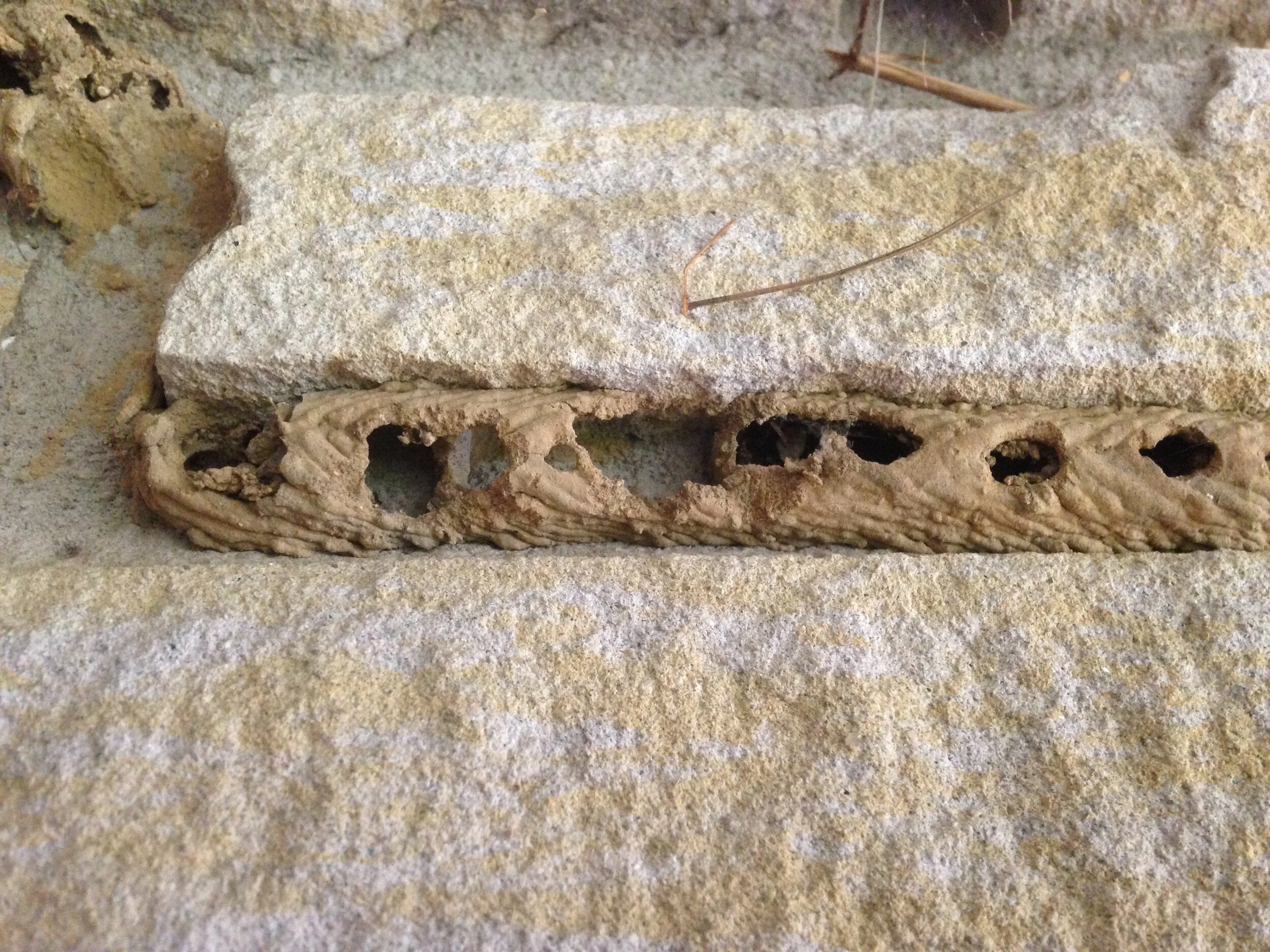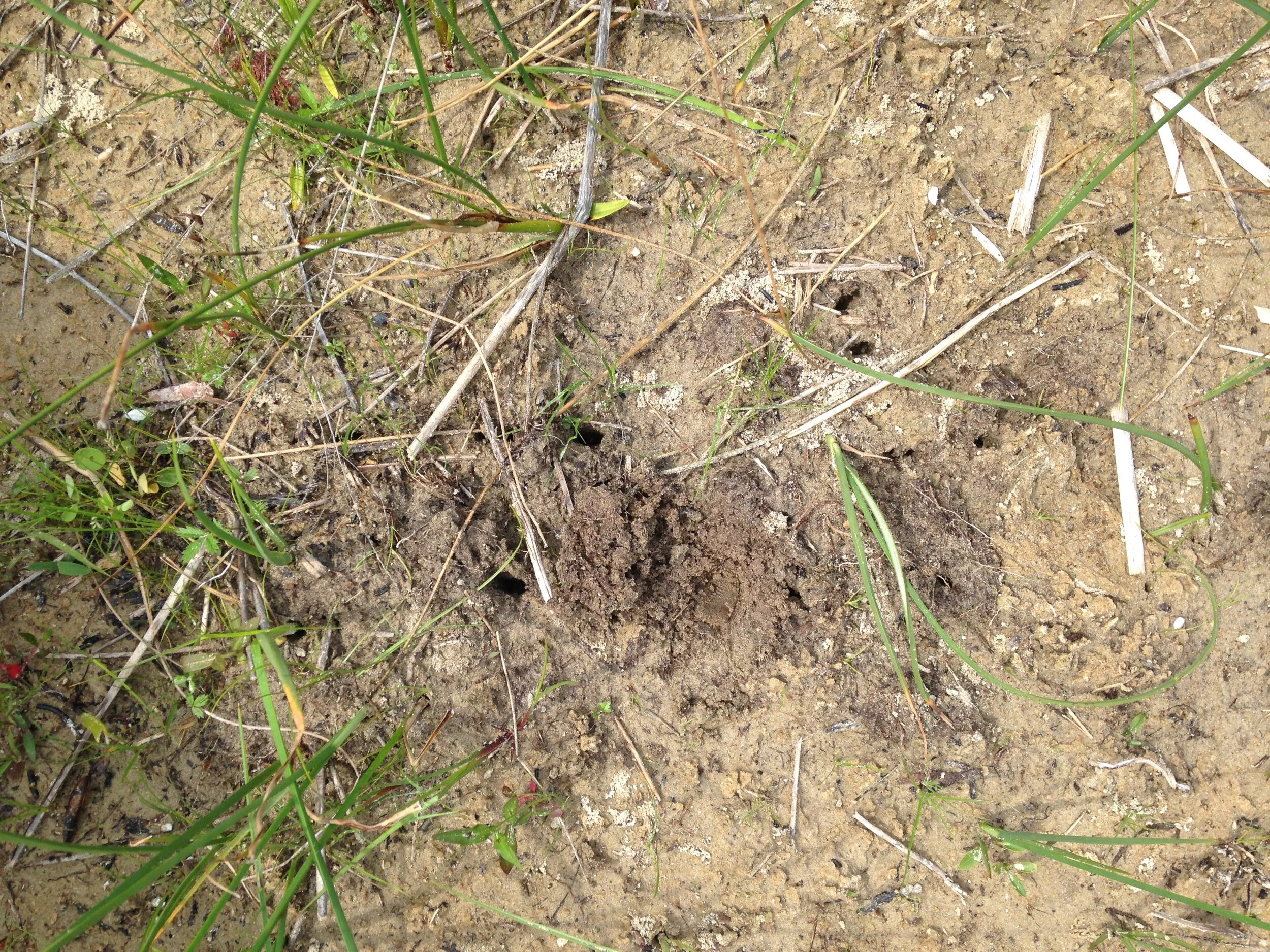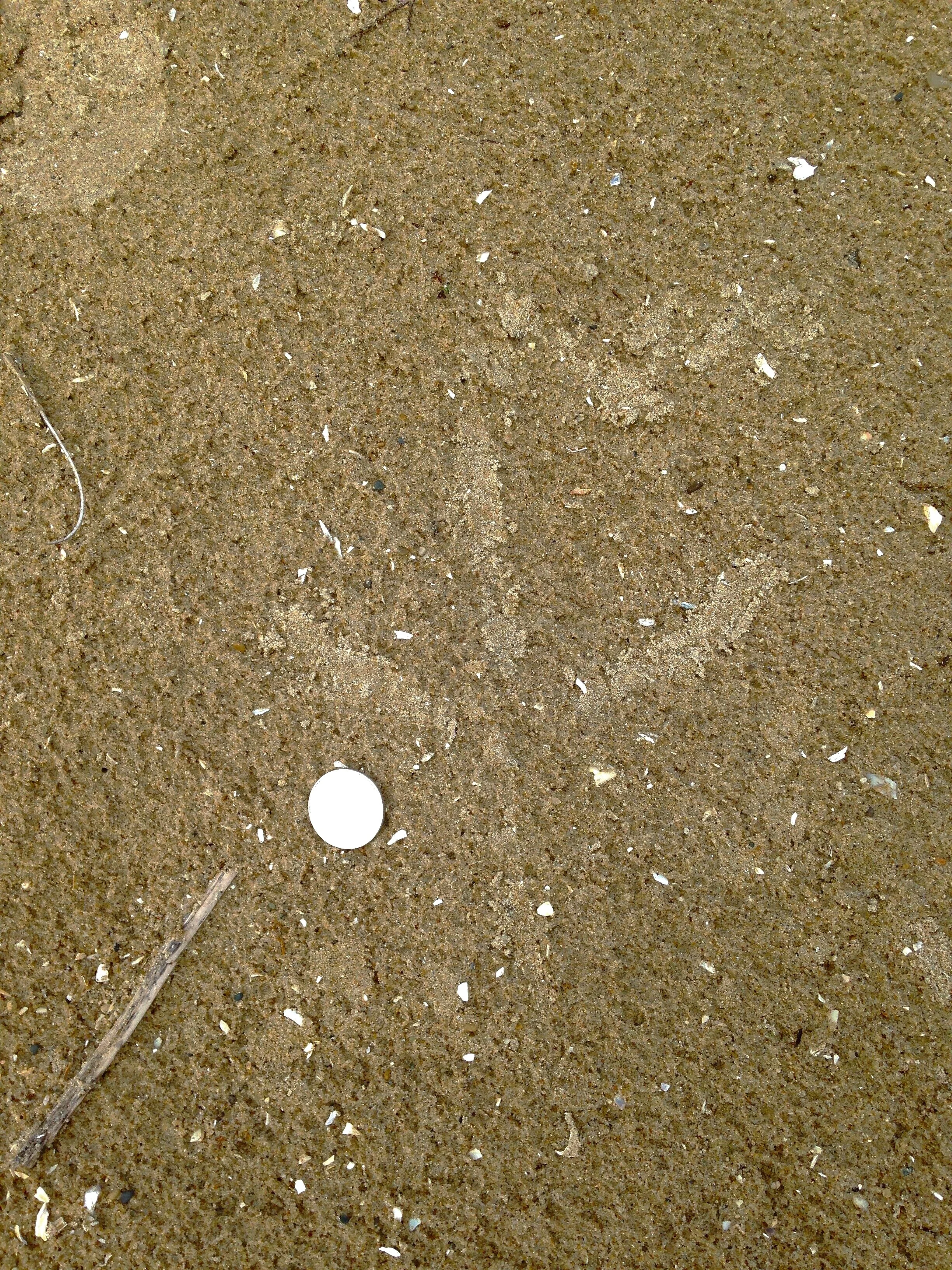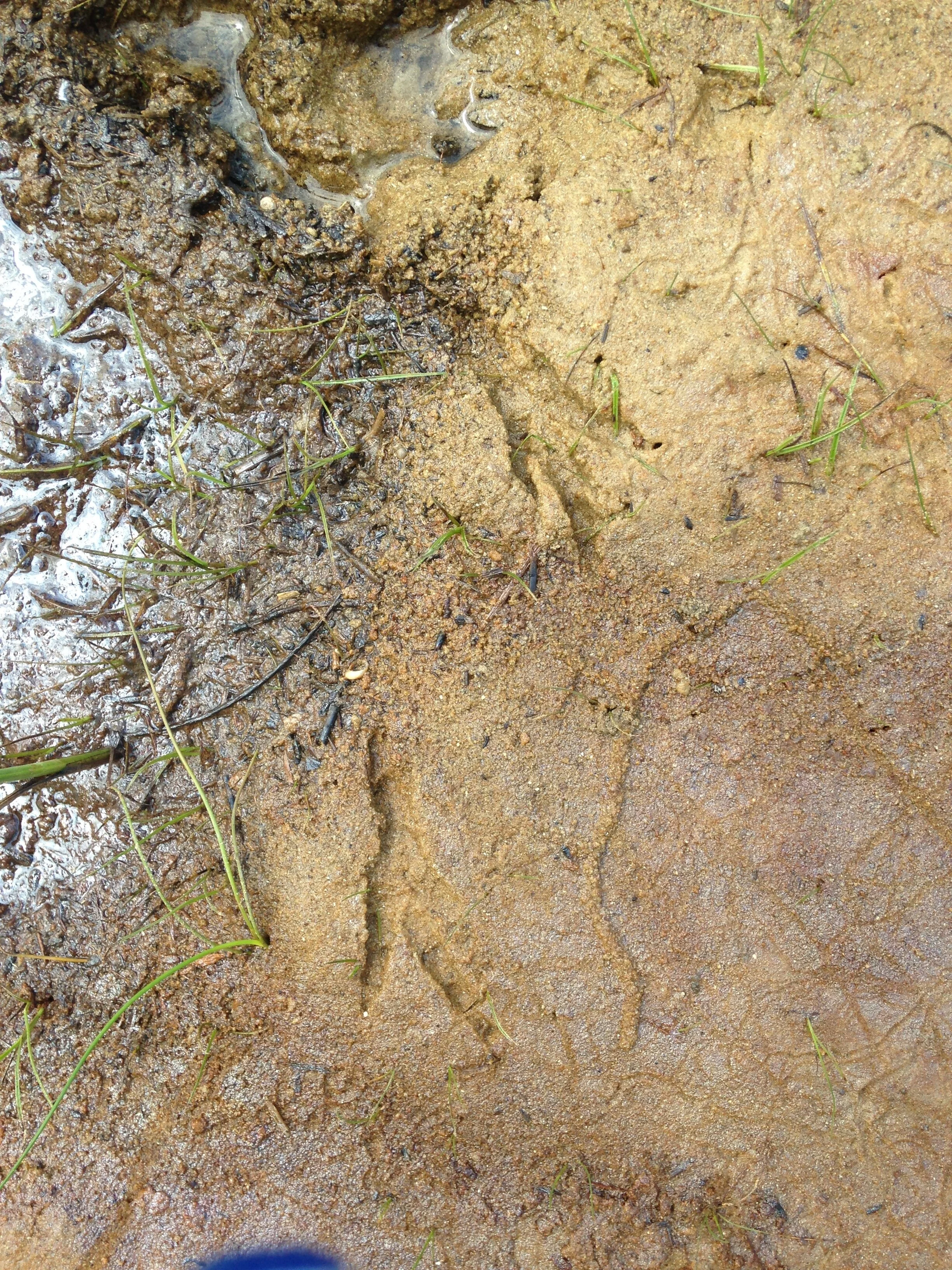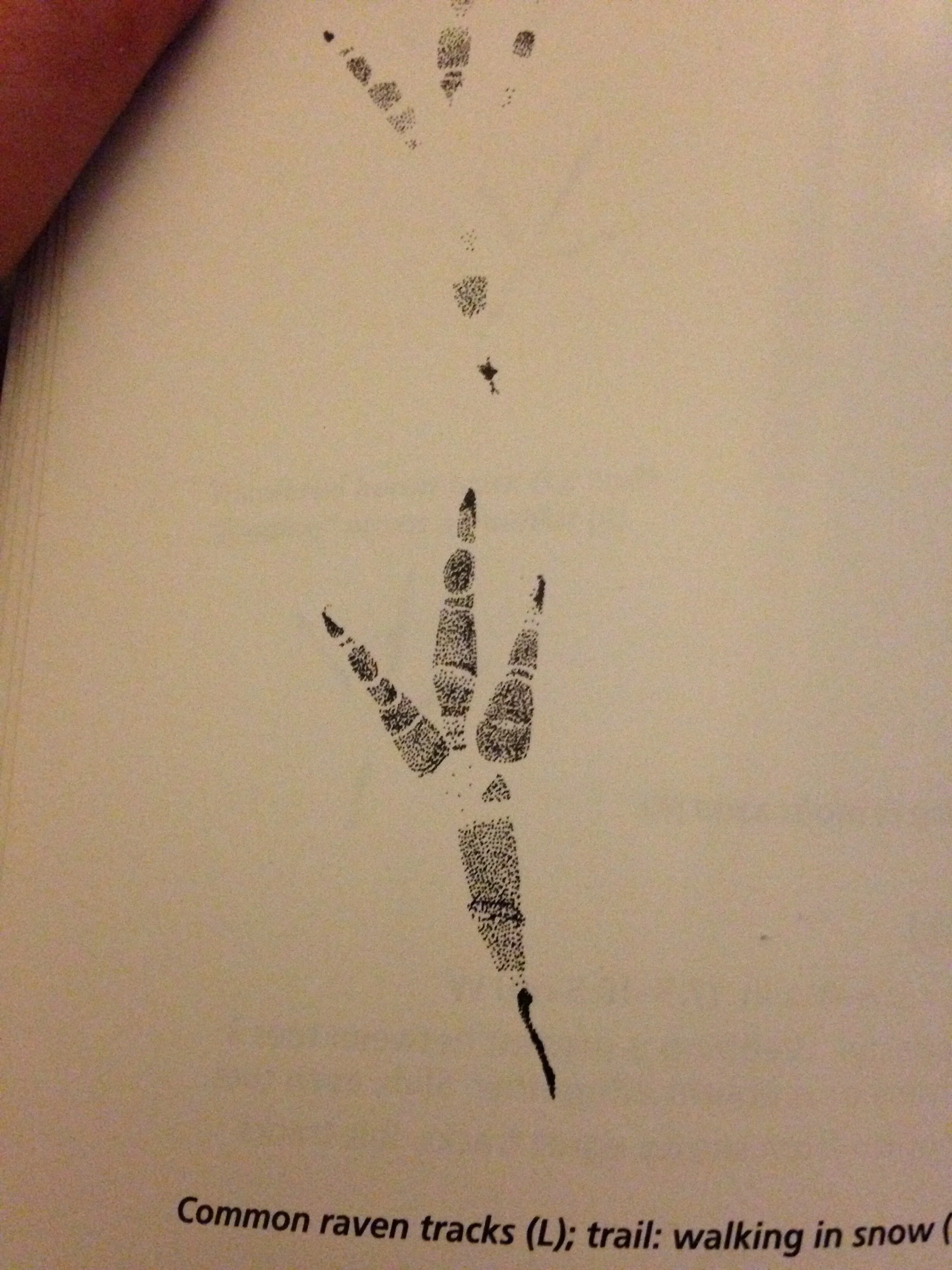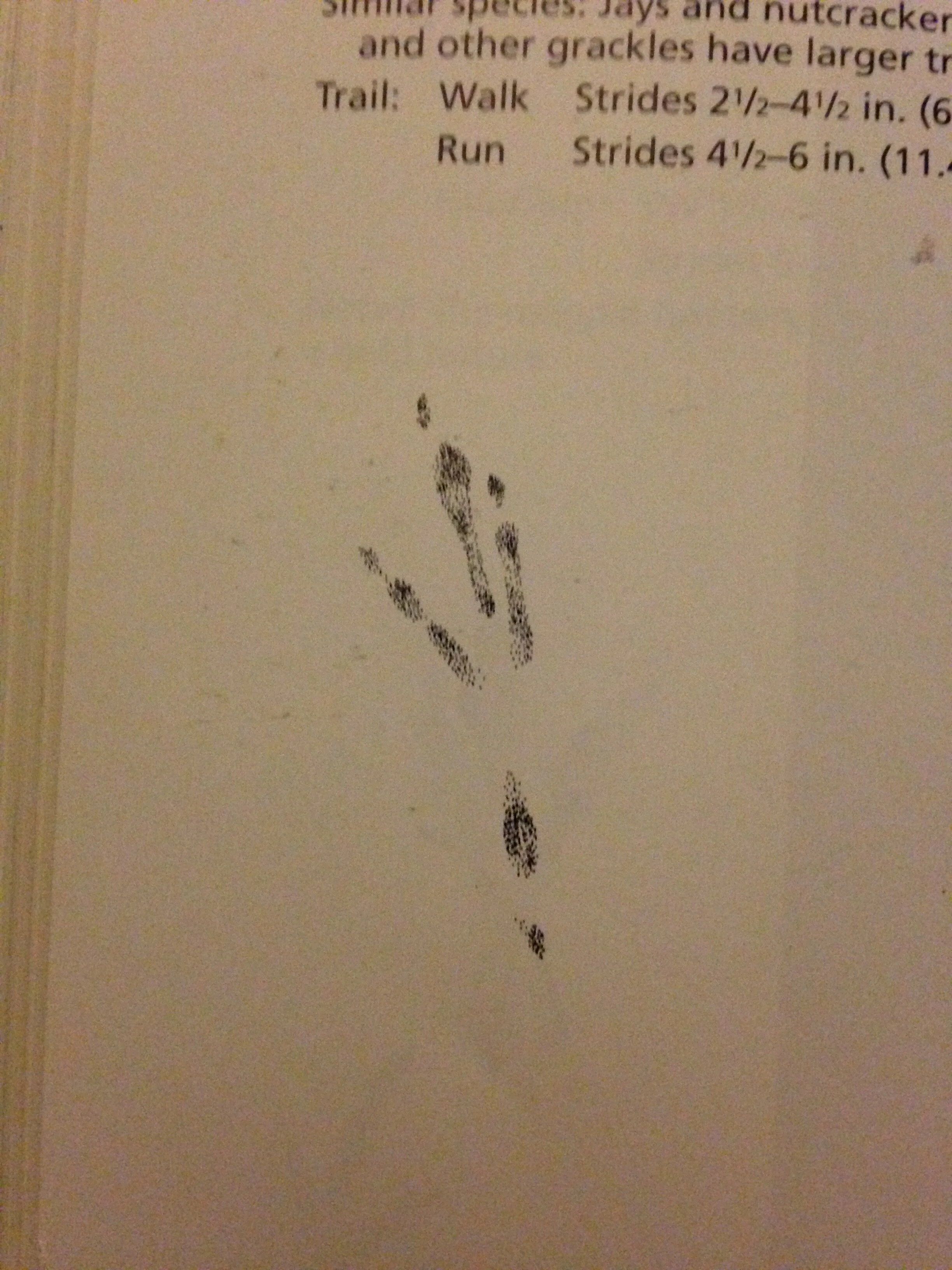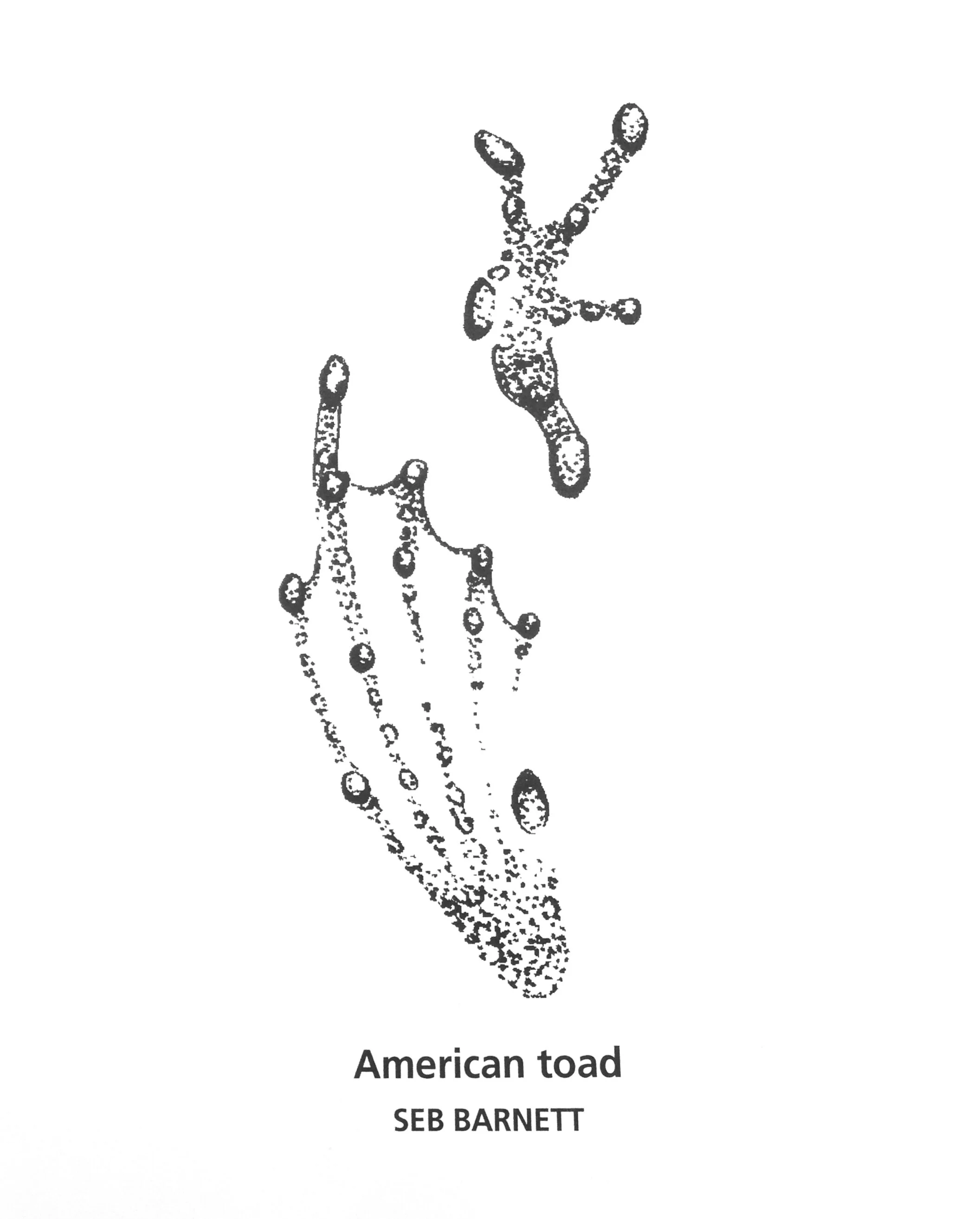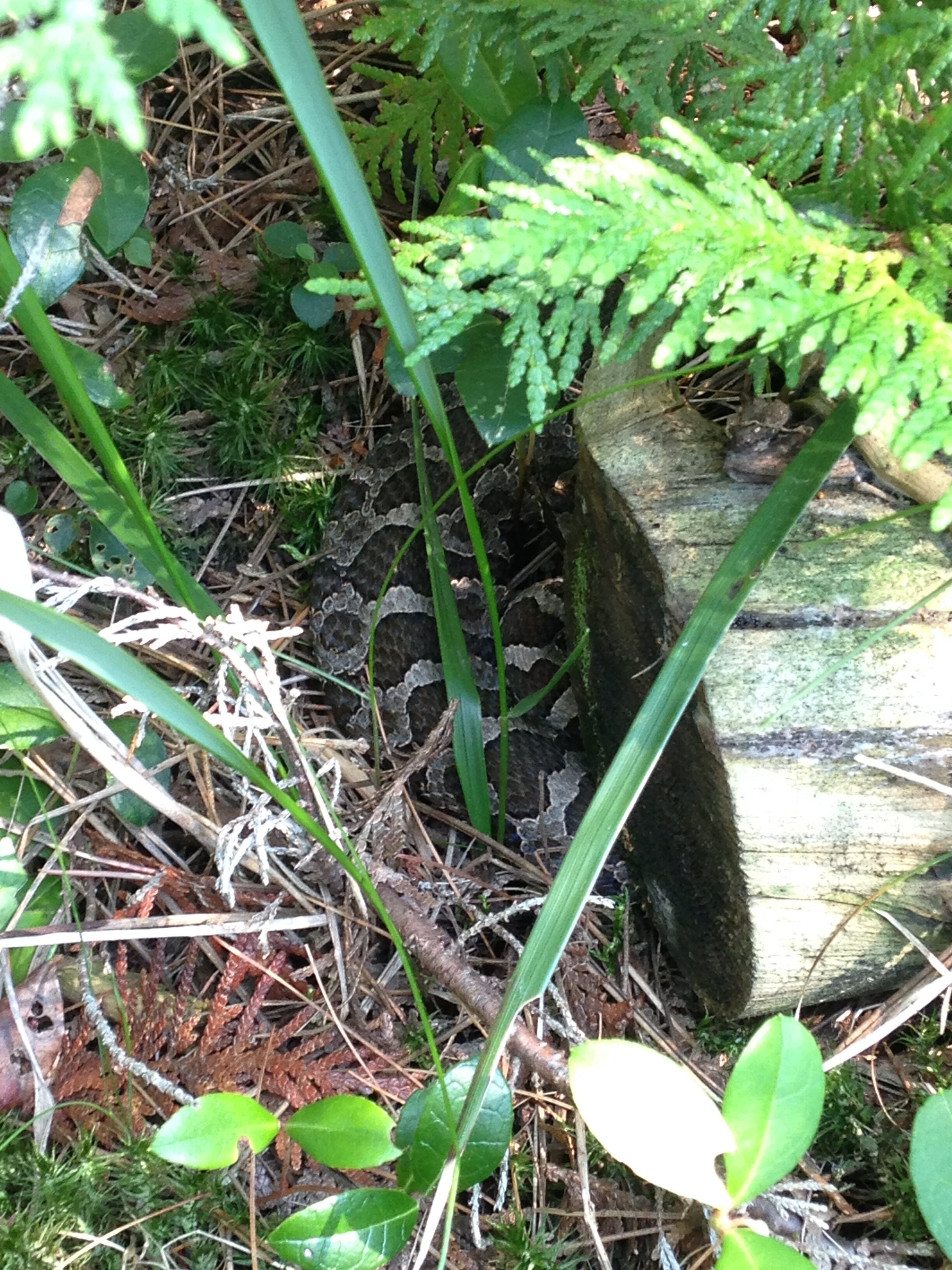Tracking Journal for 17.07.2021, Saugeen Shores
We hadn’t even left the house yet when I got to wondering what I was seeing adorning the walls in the morning.
On one of the exterior walls was a long perforated tube of what looked like crumbling foam or mortar. It was caked on and spread horizontally between the bricks. There were obvious grooves in the hardened goo where I thought for a moment that the substance had been slowly squeezed from whatever receptacle was carrying it. Only on closer inspection did I start to consider that it might not be made by human hands.
My research so far offers that this might be the nest created by a female Organ Pipe Mud Dauber (Trypoxylon politum). She builds these nests out of mud she forages from spots nearby. She’ll amass the mud on vertical walls with protection from the rain, forming multiple cells within long tubes. Then, she’ll fill the tubes with spiders she catches and paralyzes and eventually will also lay an egg within the tube. From there she patches everything up and goes about her life.
In time the egg will hatch, and the larvae will consume the spiders trapped in their cell, until they pupate and become adults when they will emerge to fly away and mate, hopefully beginning the cycle again. The construction is pretty cool. There are other “potter wasps” who build nests from mud but the Organ Pipe Mud Dauber seems to be the only species I can find who builds long tubes like this. I am left wondering about occurrence of horizontal nests vs. vertical nests, which is more common? Are different subspecies building differently or do they just use whatever topographies the host wall affords? A answer may come in time.
We eventually got into the cars and made our way an hour or so West towards the Saugeen First Nation territory on the shores of Lake Huron. The shoreline is sandy with lot of grasses, sedges and forbs along the waterline but as you move Northwards along the water the sand gives way to pocked rock. On the other side of the narrow beach was coniferous forests made up of mostly Eastern White Cedar (Thuja occidentalis), White Pine (Pinus strobus) and Tamarack (Larix laricina). Little points would have been reachable if the water was lower, but with high water levels of the Great Lakes this year the points have become small islands and were unreachable with the gear we brought. But in the small sheltered coves between the islands and the beach we saw a few Great Egrets (Ardea alba), Great Blue Herons (Ardea herodias), Belted Kingfishers (Megaceryle alcyon), Double-crested Cormorants (Phalacrocorax auritus), and Common Terns (Sterna hirundo). There were more bird species around but I couldn’t i.d. them all. Along with the birds, some of the plants we noticed when we first walked in were Purple Loosestrife (Lythrum salicaria), Shrubby St. Johns Wort (Hypericum prolificum), Harebells (Campanula rotundifolia), and unknown species of Sedge (Cyperaceae family). The floral landscape was different from previous years when I had been to this site, but this time we came in July rather than June. What a difference a month makes in the world of wildflowers!
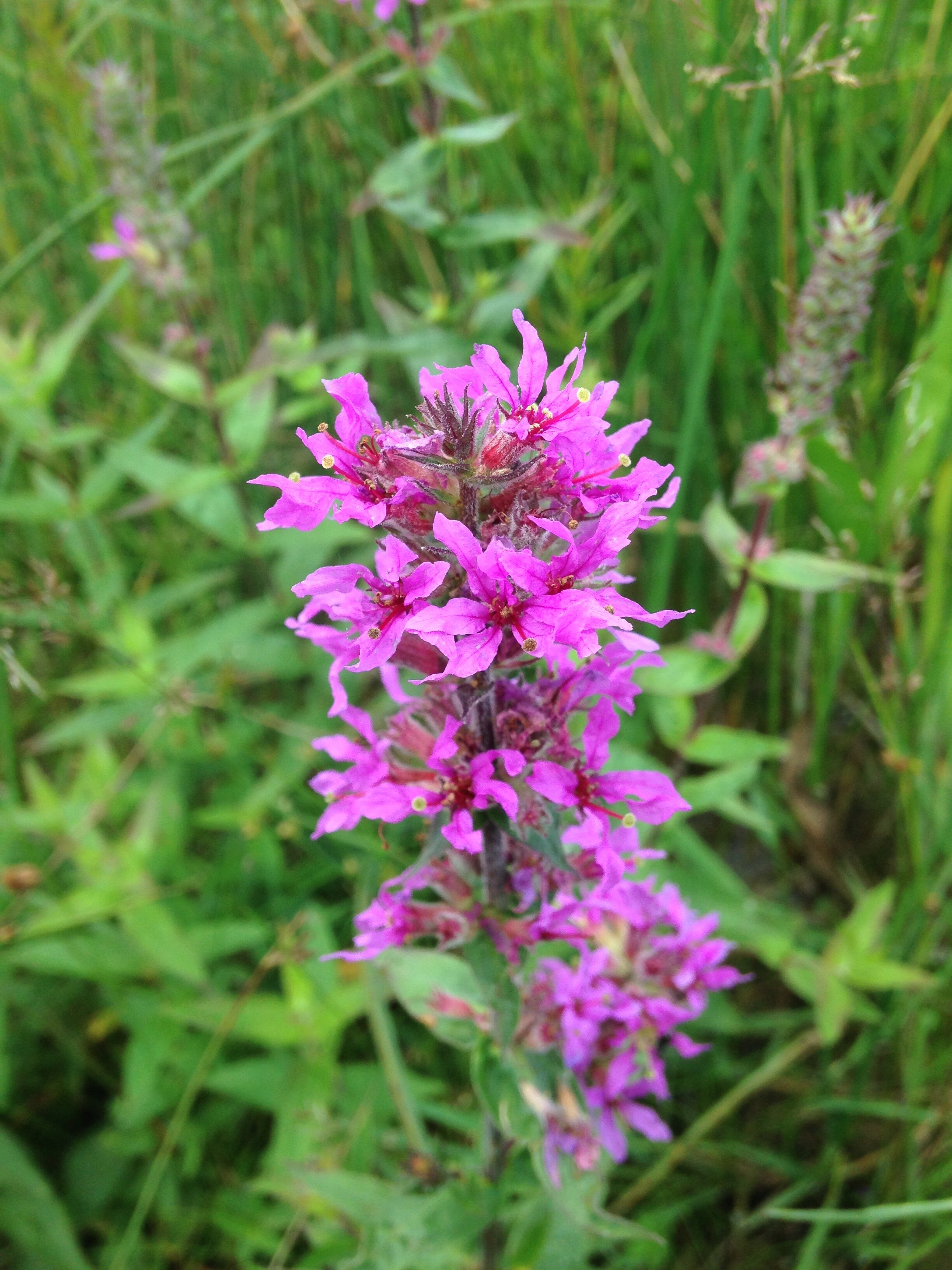

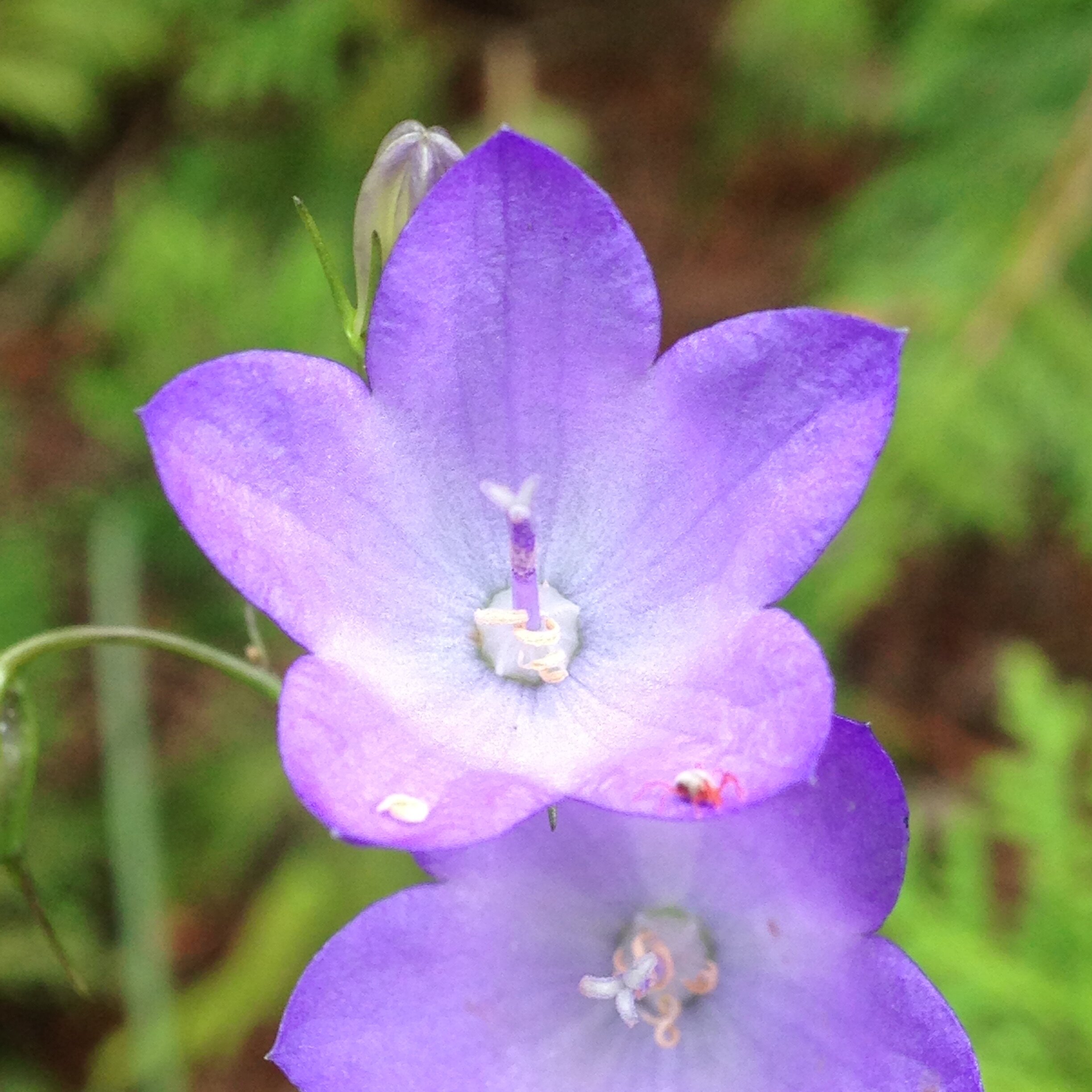
The first animal sign I really got into with everyone were these long branching ridges in the sand, around 2-3 mm in width. When we excavated the sandy ridges we found smooth shallow tunnels which seemed to imply that someone was burrowing these tunnels, and recently too as few of the ridges had caved in (perhaps also aided by the fact that the sand was still wet from morning dew or possible rain from the day before).
While folks were poking at the ridges, gently removing the displaced sand from the top of the tunnels, someone found a critter inside.
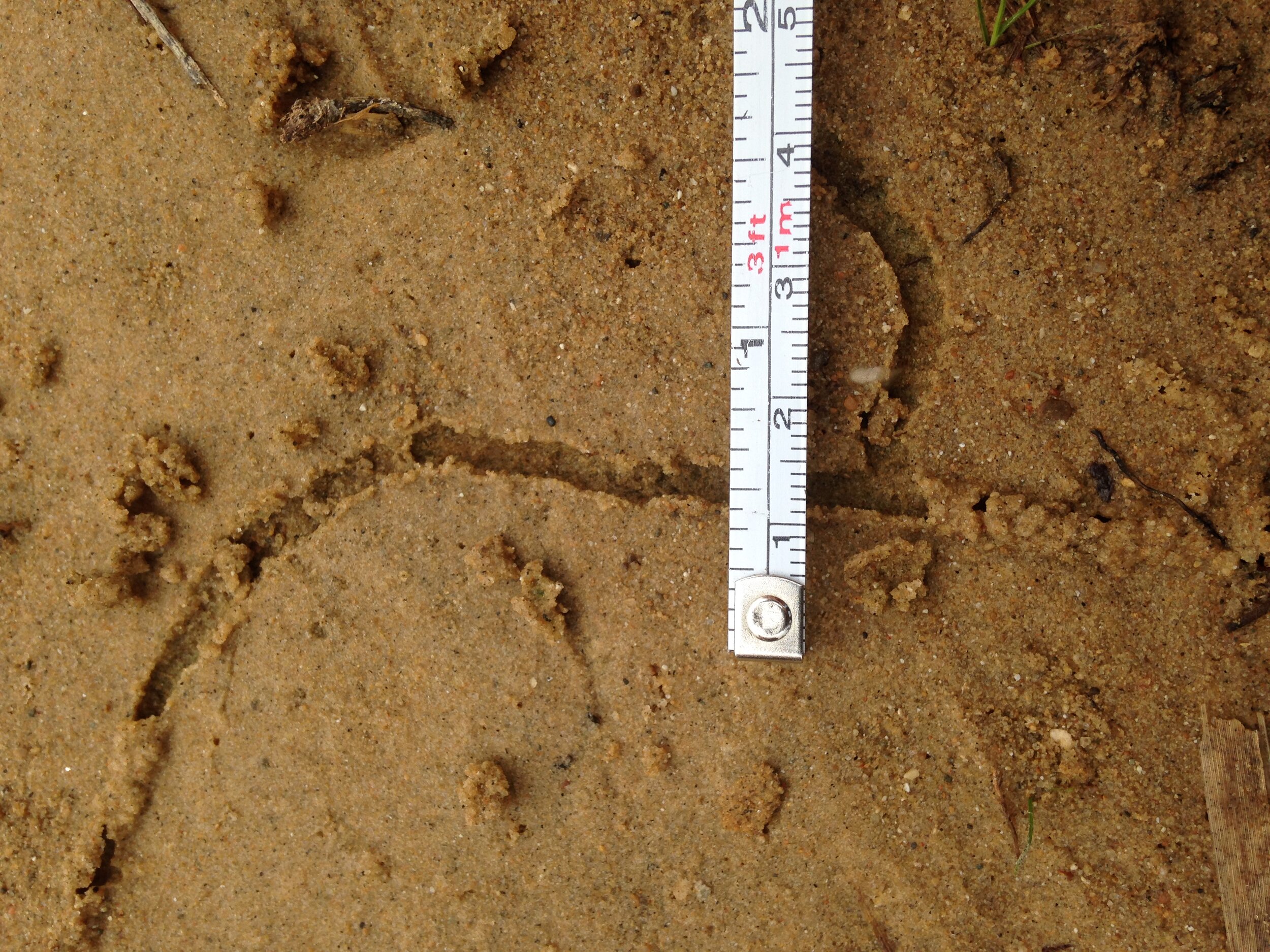
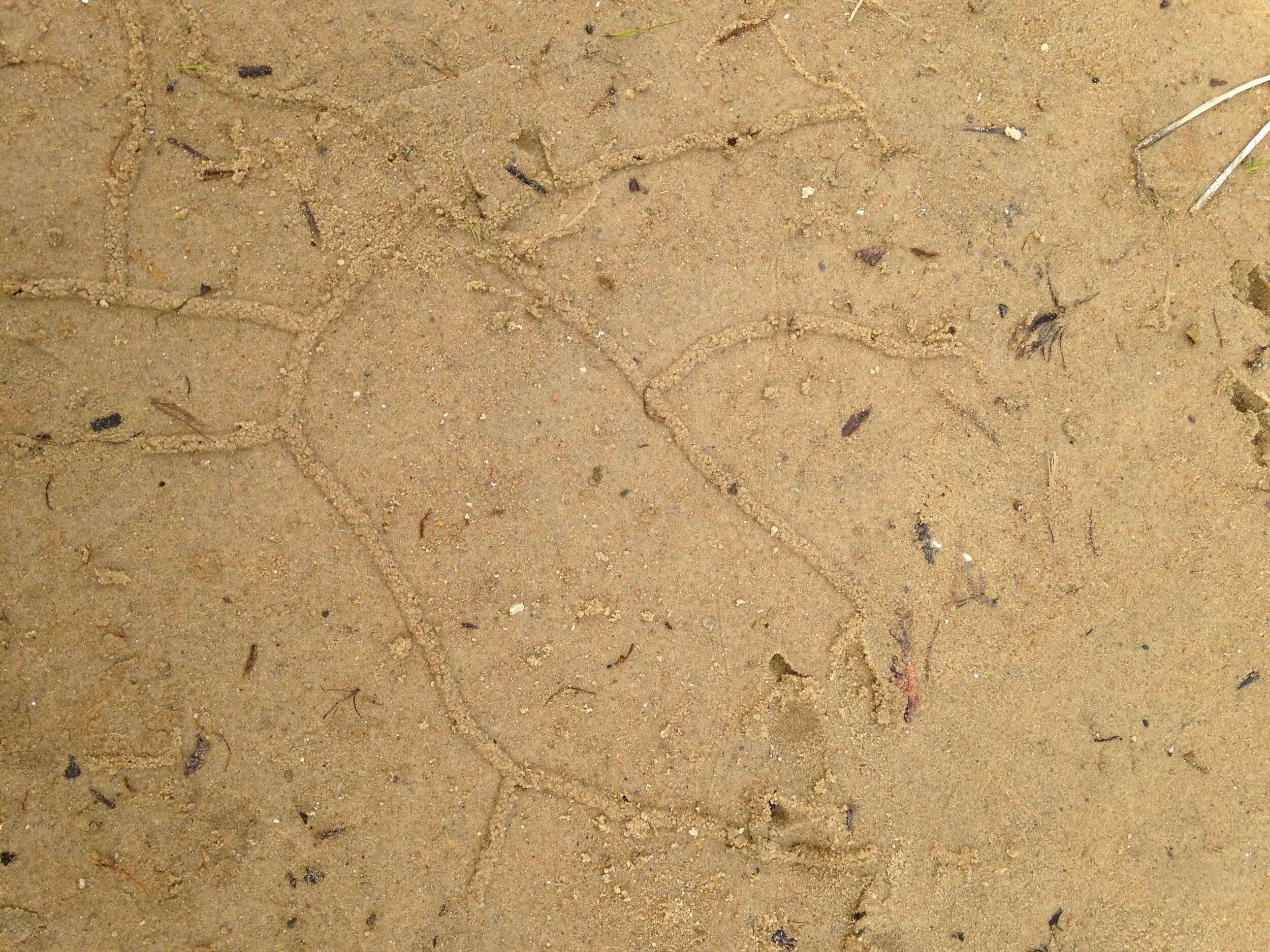
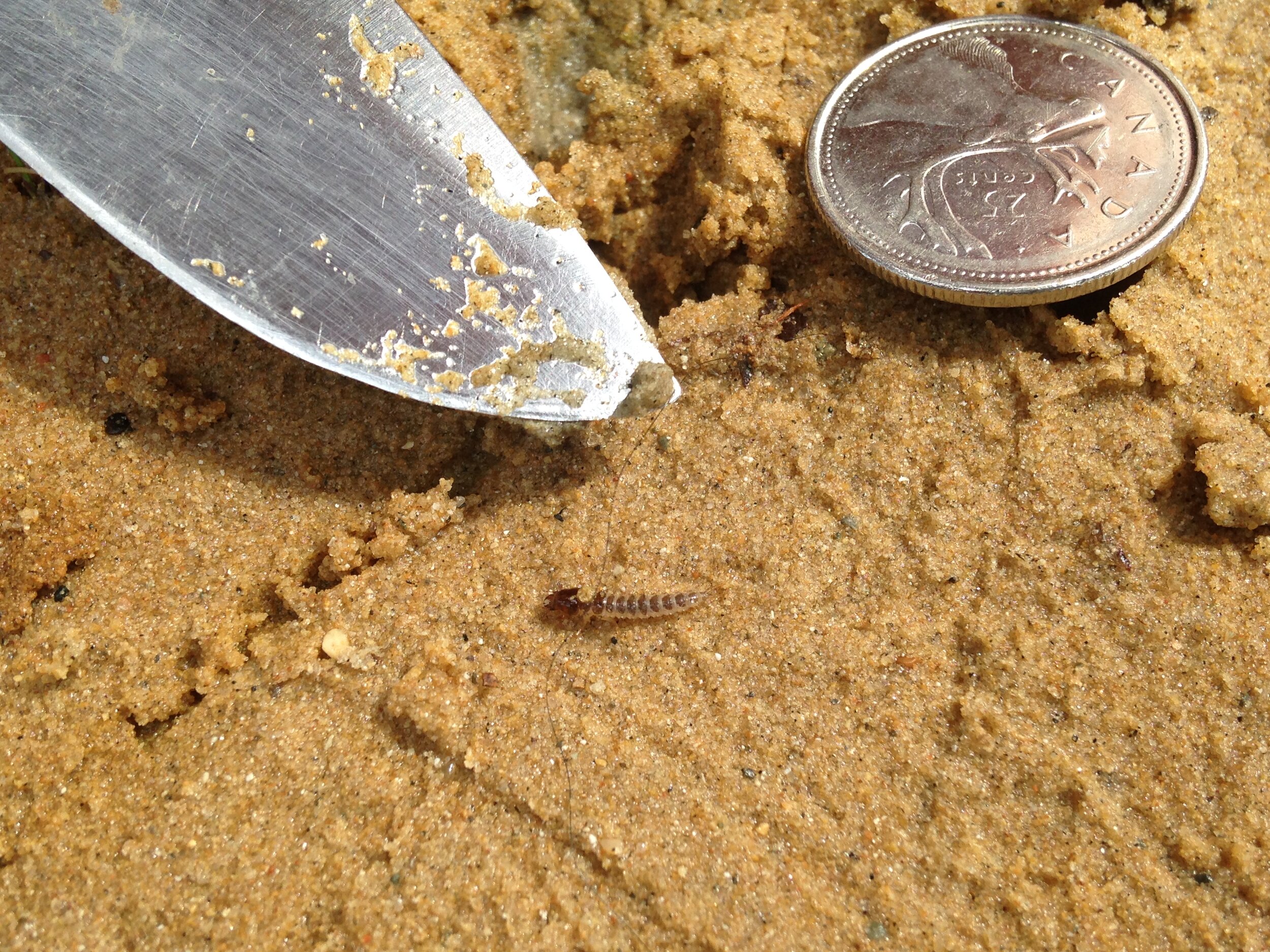
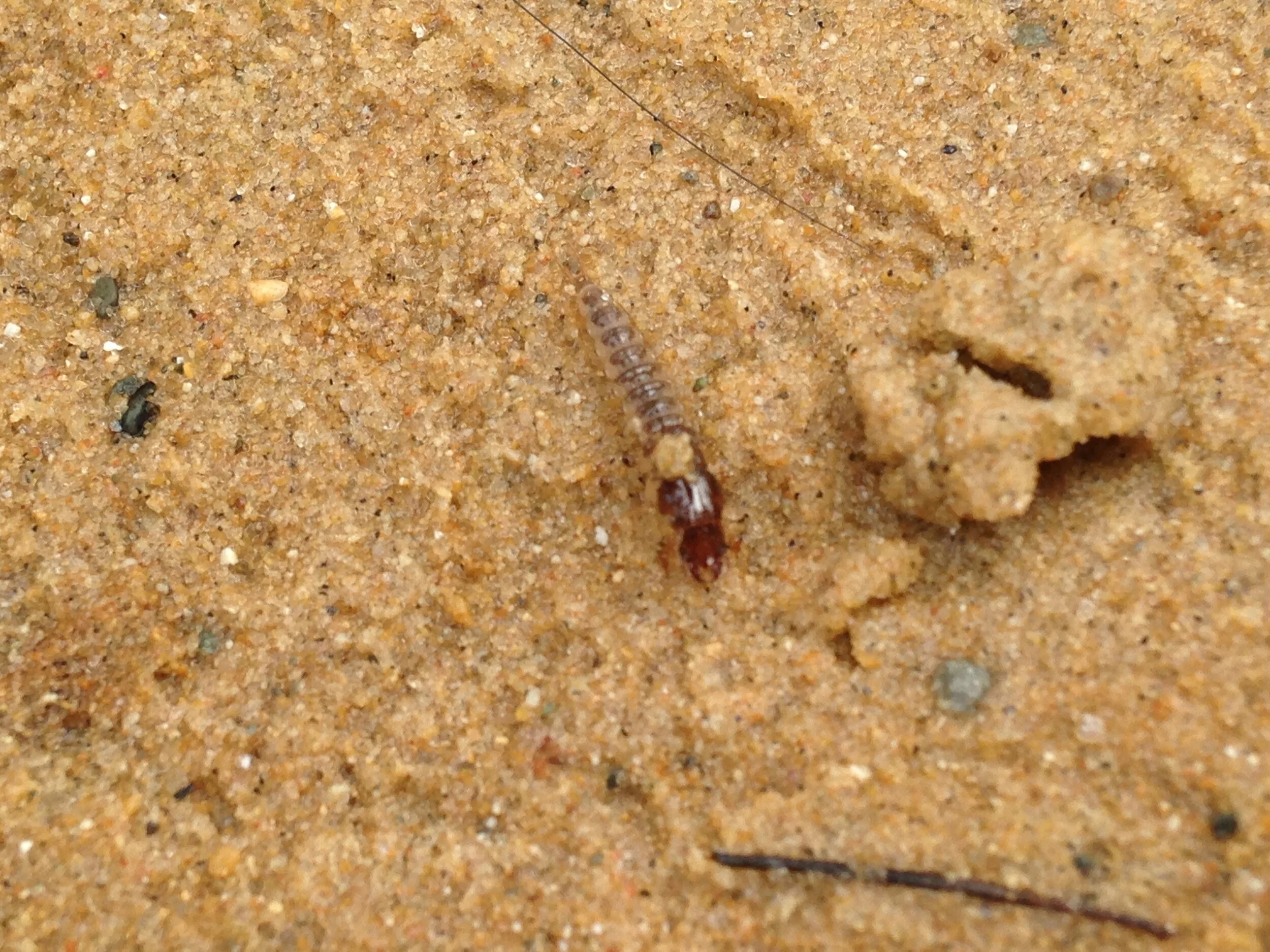
The critter, likely an insect larvae, moved pretty quickly across the sand, and then would stop, wait a second, then move on again, duck under a small bit of sand and then try and burrow down to hide and create a new tunnel. I quickly got a couple of photos but none too close or too clear. While others hunched over the tunnels, Lucas was deep into Charley Eiseman and Noah Charney’s book Tracks and Sign of Insects and Other Invertebrates searching for leads. There were a few possibilities offered in the book, including Darkling Beetles (Alphitobius diaperinus) which seems to lack the front pincers, and be more mealwormy. Another possibility was Rove Beetles (Staphylinidae family) and while most Rove Beetle larvae are a lot larger than the one we found, and spend more time in soil rather than sand there are species that will create mole-like tunnels in sandy areas adjacent to water bodies, and size of some of the smaller larval tunnels can range from a width of 1-5 mm, so that could be it? I am still in the process of sending out images looking for identification, but currently there are no response at time of publishing this post. Another unanswered question.
Close to the larval tunnels we found sign of foraging birds. The sign presents as holes about 25 mm (1”) deep into the sand caused by a bird jamming their bill into the sand probing for insects. We got to wondering about who the bird may be, and a few options came up, including : Woodcock (Scolopax minor), Plover (Charadrius spp.), Sandpipers (Scolopacidae family), and more I can’t remember. I have read in Mark Elbroch and Eleanor Mark’s book Bird Tracks and Sign that for better chances at an i.d. it is good to look for the food that the bird is probing for, and that will help narrow down the search, but without solid i.d. on the food, we may not get a solid i.d. on the bird… until some tracks were found nearby. I sadly didn’t get a photo of the track, but the measurements were 38 mm L x 50 mm W (1.5” L x 2” W), and taking the size, habitat, and location I would lean towards Wilson’s Snipe (Gallinago delicata) whose breeding range includes this part of the world, and has been tagged nearby on inaturalist.org recently, and in previous years. While not a definitive answer this offers some further leads to pursue in the future.
Photo edited for better display online.
It didn’t take long to find more tracks and trails through the soft wet sand. Only a few meters away from the larval tunnels and possible Snipe probes were some larger bird tracks.
Now I’ll admit that I have a problem when out tracking. I jump to conclusions incredibly quickly, and then slowly and surely, doubts trickle in. I saw this big track and immediately though Great Blue Heron (GBHE). It could make sense as we had been seeing them along the beach, out in the water and flying overhead, but then other folks started chiming in with other possibilities, some of which I could not ignore. Was it the Great Egret and I was just underestimating their size? Was it a Wild Turkey (Meleagris gallopavo) and imagining seeing the hallux (toe 1, which generally points towards the posterior of the bird) print in the sand? While feeling out a track, noting the general impressions, size, and shape are important and useful, it is also important sometimes, especially for beginners like me, to get down and take measurements, compare evidences and ask questions.
The track measured about 20 cm L x 15.25 cm W (8” L x 6” W). Which would technically exclude Great Egret and Wild Turkey as their tracks would be too small, but let’s be generous for a moment. The metatarsal pad (the spot on the bird foot where you can imagine all of the digits coming together) doesn’t show to solid in the track; When I see Turkey tracks, that point in the track is usually solid and pretty clear here it was kind of vague, so another point against Wild Turkey. But what about the Egret? One more disqualifier would help confirm my presumptuous conclusion of a GBHE. The confirmation came from Elbroch and Marks book.
“Great Blue Herons appear more robust in tracks, but are still difficult to distinguish”
- Bird Tracks and Sign, page 97
Not that that one factor could confirm, especially since that one factor may be the most tricky to notice or decipher, but some stacked evidences continued to confirm the initial assessment. For me, this isn’t a moment to assume my first guess is always right, but instead a reminder that I need to take my time, look for multiple reasons why the sign I am finding is what I think it may be, and to also include some reasons why the sign I am finding is not from another species. This extra effort will only lead to more insight, greater depth of perception and likely, more accurate reads on tracks and sign in the future.
Another interesting observation that came from taking the time to really look at the tracks and ask questions came when Hugh noticed that the space between toes 3 and 4 are larger than the space between toes 2 and 3. Remember, birds toes are numbered in order, beginning with the inside of the foot and circling out. This difference in width is slight, but still perceptible. This seemed to be a pattern written along the all of the observable trail of the GBHE. This means, at least for this particular bird, and perhaps all GBHE when the opportunity for checking arises, that you can tell left and right feet if you only have one track to look at.
We saw many Red Fox (Vulpes vulpes) tracks in the area, along with domestic Dog (Canis familiaris) and more small birds. I tried to take notes of everything but really there were so many tracks and signs that by the time I finished really looking at one, folks had leap frogged to the next sign. We ended up deciding to head to a spot on the beach for lunch but undoubtedly along we found more tracks!
Sometimes it takes a track you are familiar with to learn about tracks you aren’t as comfortable with. These tracks were the gateway to new knowledge that I hope I can observe in the field sometime soon.
The above tracks are from an American Crow (Corvus brachyrhynchos), with the Crow making their way towards the camera. I can see that toes 2 and 3 are closer together than toes 3 and 4. This is a common trait for species in the Corvidae family (Crows, Ravens, Jays, Magpies, etc). While observing this track other folks in our crew brought up that while this trait is common for Corvids, Blackbirds (Icteridae family) have a different trait worth noting. Some of the birds in the Icteridae family, Common Grackle (Quiscalus quiscula), Red-winged Blackbird (Agelaius phoeniceus), Brown-headed cowbird (Molothrus ater), their toe 3 hugs toe 4 closer than toe 2 does with 3.
Maybe an image can help:
Toes 2 and 3 closer, Common Raven (Corvus corax)
Toes 3 and 4 closer, Common Grakle (Quiscalus quiscula)
This is going to change and shift depending on substrate and one track in a line of them will look different than the next, but as a general rule, this can help identify members of these two family groups.
We moved on from here and came across more signs from all sorts of other animals living and dying along the beach. We tried to make our way towards a Great Egret who was half hidden behind tall grasses in hopes that there would be sand where they were standing and if we were lucky, tracks. But as we walked closer, the Egret flew further away up the shoreline and the spot where they had been standing was puddles, rock, and grass. We did find a dead Striped Skunk (Mephitis mephitis) close to where the Egret had been. It was an interesting discovery.
Maddie and I work together and are doing the tracking apprenticeship together. We both noted that we could tell who the animal was by the smell of the corpse. Raccoons smell a special way when they are dead, as with Carp, Deer, and some other dead animals I have encountered. Skunks obviously have a specific smell, but I think it takes a second to recognize it. We had been smelling dead Skunk for a few months at work in the Spring and now I think the scent is forever lodged in our memories.
We sang the song for the dead Skunk and took a moment to examine the mandibles before moving along up the beach.
Still from video of Alexis Burnett explaining how to see the American Toad tracks in the sand.
American Toad track drawing by Seb Barnett from Tracks & Sign of Reptiles and Amphibians by Filip Tkczyk
Throughout the day we encountered many frogs and toads of various species; Northern Leopard Frogs (Lithobates pipiens), Wood Frogs (Lithobates sylvaticus), and American Toads (Anaxyrus americanus). We found them hopping through the grasses and sedges on the treed side of the beach, and along the shallow edge of the lake bordering the beach we walked along. Most of them were small, perhaps newly embodying their young adult forms.
Along the way we also found tracks from some of them. The above images show the tracks of an American Toad we were studying, and a drawing of American Toad tracks by Seb Barnett from Filip Tkaczyk’s book Tracks & Sign of Reptiles & Amphibians. Check out the video below for detailed explanation from Alexis as to how to see the tracks better.
We ducked into the Cedar woods on the treelined side of the beach and began exploring in there. It was a lot cooler than out in the hot sun on sand, even if the trees cut some of nearly imperceptible breeze coming up the beach. A crew and I found a Raccoon skull and discussed some i.d. features for a bit and then emerged to hear about something exciting the rest of the crew had found.
Panorama image edited for clarity and definition
I was hoping we’d find something like this. But the challenge offered to our group was beyond a basic i.d. but instead also looking at a nearby Ruffed Grouse (Bonasa umbellus) trail which intersected with a long trail like the one in the image above. We looked to see if we could figure out who came by first, and who was there later. It seemed like long trail maker had come by first, and then the Grouse (if I remember correctly). I bet anyone reading this can guess who the long trail maker is… It was a snake! What kind of snake? Well, I have my guess but very little to back it up. But something cool that Rachelle pointed out was that the direction of travel can be read by thinking of gravity. If the sandy trail bordered by grass is lower than the grassy sides than the snake can easily slide down into the trail from the higher grass. The tricky part for the snake though is getting up the other side of the little trail-valley. How does the snake do this? Well that’s a bit complex.
Snakes have a few different types of locomotion, and seen in the image above are two of them, rectal-linear and serpentine. Snakes achieve serpentine locomotion (also called lateral undulation) by concentrating weight in specific areas of their body and pushing forward from those spots. By doing this the snake is propelled forward. Contrary to mammals, the faster the snake is moving (while using this serpentine locomotion), the wider the trail width.
The snakes ventral scales also help by inhibiting sliding. If you look at a snake’s ventral scales you will see how they appear similar to overlapping shingles on the roof of a house. These scales overlap along the bottom of the snakes body and you can imagine how they would create a smooth plane if the snake is moving forward. Now if the snake ends up sliding backwards, either from slipping or climbing, the ventral scales will catch on small particles or ridges on whatever surface they are making their way across. This catching by the ventral scales alongside body weight distribution helps to propel the snake forward the same way that the tread on our shoes or friction ridges on our feet help us move forward. All this to say that I think the snake was moving slowly when they first came out of the grass on the left hand side, and then sped up, building momentum for the push up the right hand side of the small trail-valley.
And of course, only a few steps later we spooked a Massasauga Rattlesnake (Sistrurus catenatus catenatus), who literally jumped, and then slithered (or serpentine locomoted?) under the a nearby Cedar and then tried to tuck themselves under a log. Of course a couple of us couldn’t resist getting a little bit closer for a photo.
With all of the excitement of seeing the Massasauga so shortly after checking out the snake trails we ended up over shooting the trail that would lead us back to the vehicles we came in, but when we finally got back to the trail we found Black Bear (Ursus americanus) tracks which were maybe about a week old, but still firmly set into the fallen Pine needles.
There was so much we saw that day, and even the next day when we were visiting the other side of highway 13, but I have gone on long enough already to describe anymore for now.

